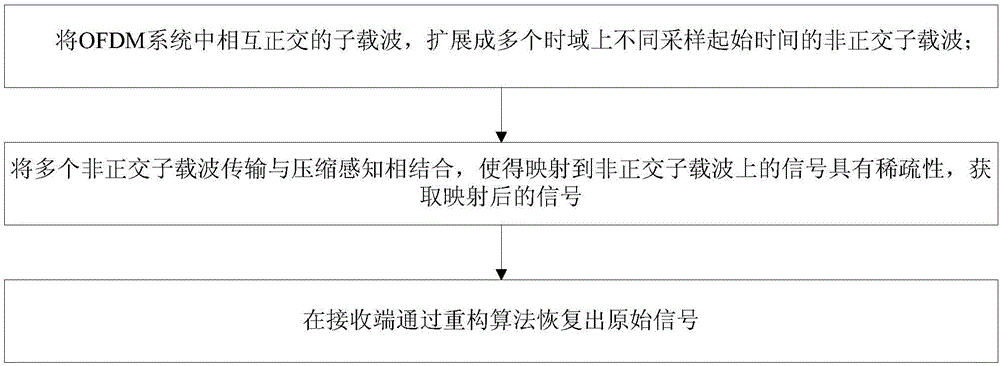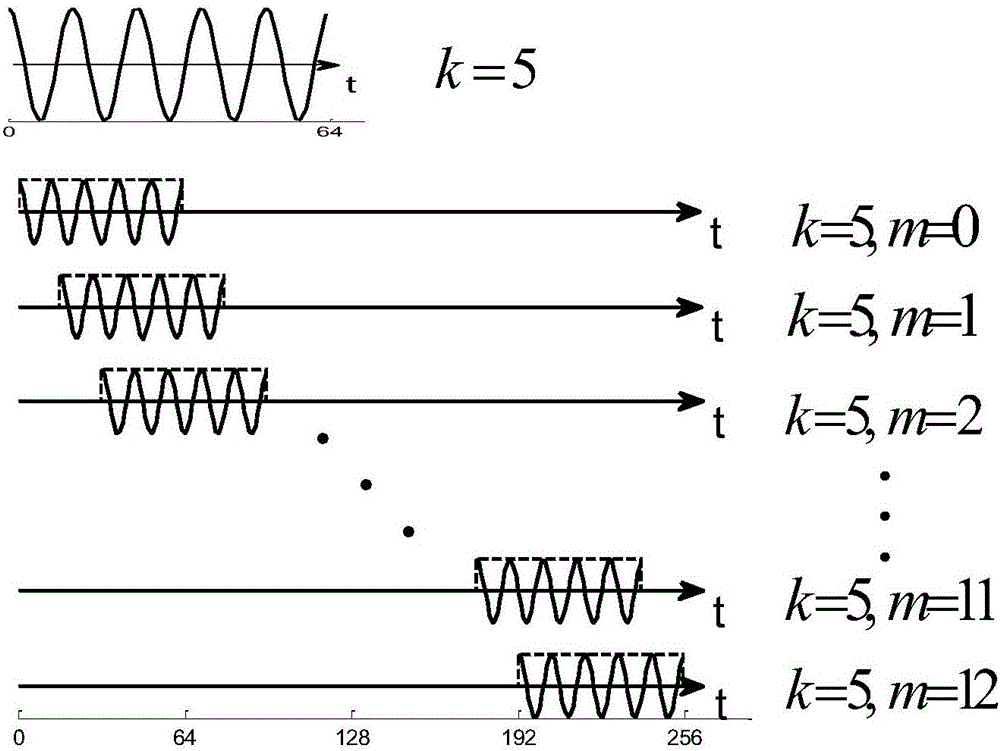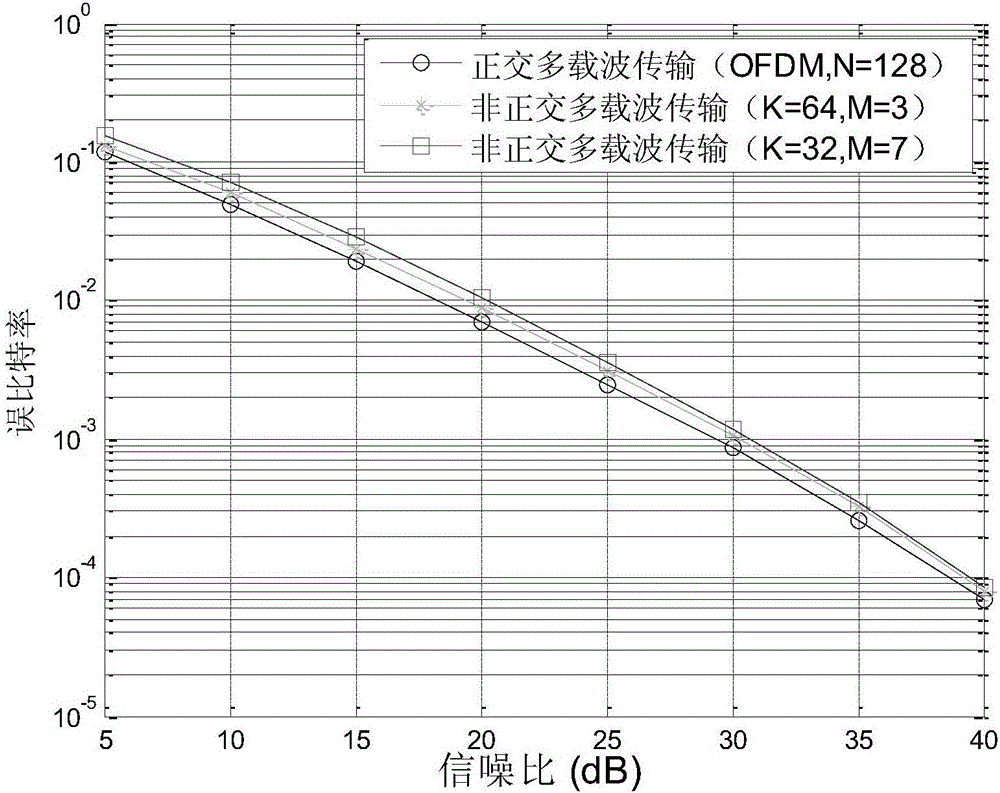Nonorthogonal multi-carrier transmission method
A transmission method and non-orthogonal technology, applied in the field of multi-carrier transmission and wireless communication, can solve the problems of increased inter-symbol interference and high complexity of the receiving end
- Summary
- Abstract
- Description
- Claims
- Application Information
AI Technical Summary
Problems solved by technology
Method used
Image
Examples
Embodiment 1
[0024] An embodiment of the present invention provides a non-orthogonal multi-carrier transmission method, see figure 1 , the method includes the following steps:
[0025] 101: Extend mutually orthogonal subcarriers in an OFDM system into non-orthogonal subcarriers with different sampling start times in multiple time domains;
[0026] 102: Combining multiple non-orthogonal subcarrier transmissions with compressed sensing, so that the signal mapped to the subcarrier is sparse, and obtaining the mapped signal;
[0027] Firstly, the carrier matrix is used to obtain the sparse representation of the original input signal in the carrier matrix domain, and the dimension of the sparse representation signal is the same as the number of carriers; then the obtained sparse representation is mapped to the corresponding subcarriers for transmission .
[0028] 103: Recover the original signal through a reconstruction algorithm at the receiving end.
[0029] The receiving end first uses ...
Embodiment 2
[0032] Combined with the specific calculation formula, the appended figure 2 The scheme in Example 1 is further introduced, see the following description for details:
[0033] 201: Non-orthogonal multi-carrier design ideas;
[0034] Assuming that the system inputs N channels of QPSK symbols, N channels of orthogonal subcarriers are required for transmission in the OFDM system, and the symbol time domain sampling time is N.
[0035] In the embodiment of the present invention, to transmit N QPSK symbols, only K orthogonal subcarriers (KN), and the occupied spectrum resources are only is the bandwidth of K orthogonal subcarriers, which can improve spectrum utilization.
[0036] 202: Construction process of non-orthogonal multi-carrier system;
[0037] Among them, the k-th subcarrier in the K orthogonal subcarriers is extended to obtain M non-orthogonal subcarriers with the same frequency and different sampling times in the time domain. The waveform of the non-orthogonal subca...
Embodiment 3
[0044] Combine below image 3 The scheme in embodiment 1 and 2 is carried out feasibility verification, see the following description for details:
[0045] like image 3 Shown is a system performance comparison chart of orthogonal multi-carrier transmission (OFDM) and non-orthogonal multi-carrier transmission proposed by the embodiment of the present invention, wherein the channels are all Rayleigh fading channels, and the input signals are all QPSK symbols. The OFDM system includes N=128 orthogonal sub-carriers, and the system symbol duration is N=128. The non-orthogonal multi-carrier transmission proposed in the embodiment of the present invention is under the same condition that the system symbol duration is N=128, with K= 64. Take the multi-carrier system with M=3 and the multi-carrier system with K=32 and M=7 as examples.
[0046] Depend on image 3 It can be seen that with the change of SNR conditions, the non-orthogonal multi-carrier transmission scheme proposed in t...
PUM
 Login to View More
Login to View More Abstract
Description
Claims
Application Information
 Login to View More
Login to View More - R&D
- Intellectual Property
- Life Sciences
- Materials
- Tech Scout
- Unparalleled Data Quality
- Higher Quality Content
- 60% Fewer Hallucinations
Browse by: Latest US Patents, China's latest patents, Technical Efficacy Thesaurus, Application Domain, Technology Topic, Popular Technical Reports.
© 2025 PatSnap. All rights reserved.Legal|Privacy policy|Modern Slavery Act Transparency Statement|Sitemap|About US| Contact US: help@patsnap.com



